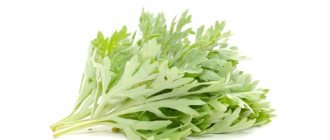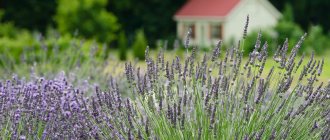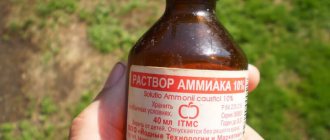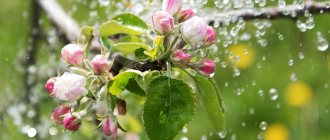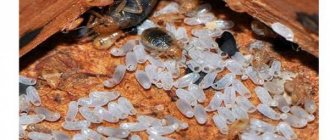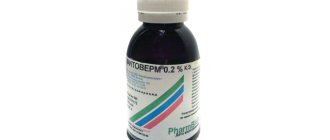Mosquitoes love the smell of carbon dioxide released by our breath and compounds released by our sweat. Mosquitoes are also attracted to warm bodies, making humans the best choice for their feasts. If you don't want to water yourself or your garden with chemical sprays, you can grow some repellent plants to naturally repel mosquitoes.
- How do repellent plants help?
- TOP 7 real repellent plants 1 Repellent plant: Lavender
- How to make your own lavender oil
- 2 Repellent plant: Marigold
- 3 Repellent plant: Catnip
- 4 Repellent plant: Mint
- How to make your own peppermint spray
- 5 Repellent plant: Basil
- How to make homemade basil spray
- 6 Repellent plant: Monarda
- 7 Repellent Plant: Thyme
- 1 Does not protect against mosquitoes: Rosemary
How do repellent plants help?
Simply adding insect repellent plants to your landscape will not in itself help you in the battle against mosquitoes. The concentration of essential oils in the garden is not high enough to provide reliable protection. Plant repellent plants in areas where guests will frequently be, such as near a seating area or doorway. Some plants work best when the leaves are rubbed directly against the skin, but this is not recommended for all plants. Below we have noted which plants it is safe to use. Consult your doctor or dermatologist to find out what's best for you and your skin.
Natural repellents can be placed around the garden
You can find out how to help your skin after a mosquito bite in our article >>>
Some of these plants are best suited for growing in pots and planters as this allows the plants to be easily moved around the house. On the other hand, many plants do better in the garden because they repel many types of insects (and therefore work as a natural insecticide for your garden bed).
There is no open research yet on how many plants planted as close together as possible will be effective at repelling insects. The best thing you can do to control mosquito populations is to eliminate any standing water in which mosquitoes breed. If necessary (for example, if you have a birdbath), be sure to empty and clean it at least once a week.
You can find out how to make an aromatic bed here >>>
We are not sure that all of the listed plants work in this way in all areas, so we would be happy to hear your opinion in the comments.
Common thyme is a recognized repellent plant.
Helping flowers
Marigold
Unpretentious and bright flowers of different sizes will drive mosquitoes away. They are pleasing to the eye until late autumn. If you add 2-3 flowers to a jar of marinade, the cucumbers will turn out crispy and fragrant.
Some petals are also added to tea. Not only are they very fragrant, but they also kill viruses and bacteria. Useful for acute respiratory infections and digestive disorders.
Lavender
Mediterranean beauty that requires a lot of warmth and light. In the middle zone, only one species can be grown, but for the winter, lavender is usually put away in a warm room. Therefore, it can be planted in flowerpots near the bedroom windows, like other plants that repel mosquitoes. Its strong spicy smell will give you a sound sleep that will not be interrupted by persistent bloodsuckers.
Lavender is used as a sedative, diuretic, analgesic and wound healing agent. In the Middle Ages it was a herb for all occasions.
Interesting! Rub the herbal infusion or essential oil over the bruise, wound or burn. Strengthens hair and makes it silky. To do this, you can add 3-5 drops of oil to shampoo or rinse your hair with its decoction.
Pelargonium
This indoor flower can be planted in a flower bed in the summer, then the mosquitoes will blow away like the wind. It will look great:
- in a discount and a flowerpot;
- in a container at the front door;
- or in a balcony box.
Interesting! A strong odor comes from the leaves, which can be added to salads, soups and meat dishes. Fragrant, tasty and healthy. Flowers added to compote or jam will protect it from mold.
Requires feeding during periods of intensive growth. To grow greenery you need nitrogen, and for lush flowering you need phosphorus and potassium.
pennyroyal
ehomekitchen.ru
This type of mint smells very strongly, so many people do not like its strong aroma. But in open areas where the smell is not concentrated in space, it helps to cope with mosquitoes. And its flowers attract many butterflies.
Other properties:
- ingredient in many Caucasian dishes;
- plant oil is used to combat skin parasites in animals;
- helps with insomnia and headaches.
Bodinier's beautiful fruit (Callicarpa bodinieri)
The tiny white flowers of the beautiful carp are not very attractive, but the bright bushes with purple berries make this small shrub stand out in the landscape. The aromatic oils released by crushing the leaves repel mosquitoes , and although not common as edible, the leaves and berries are safe to eat.
Photography – instagram
Lavender
dachadecor.ru
A beautiful plant with a soothing aroma that is best grown in pots (or to help it survive the cold winter). What not to be scented with lavender! But mosquitoes do not like its essential oils.
Other uses:
- dried flowers - seasoning for baked goods and confectionery;
- used as an antiseptic;
- Lavender sachets are used to protect things from moths.
Spicy herbs that repel insects
Spicy herbs are a separate topic for discussion. If the flowers are beautiful and useful from the point of view of fighting insects, then the spices can additionally be used in cooking. In fact, this is precisely why they are most often grown. And the smell they spread around perfectly aromatizes the summer cottage.
Rosemary
Rosemary is not only an aromatic seasoning for meat dishes and steaks cooked in a josper or on the grill. This plant has long been successfully used in landscape design. It is planted in hanging pots and containers to decorate window sills and balconies. Rosemary is allowed to climb along special supports. It is used for landscaping the area around the perimeter of the site, as well as in rock gardens, mixborders and other flower gardens.
Mint
Mint is an essential ingredient in country tea. This spicy herb combines healing properties and amazing taste. Among the many varieties of this plant, you can find those that differ from their counterparts in their decorative variegated foliage. This way mint will become not only useful, but also a beautiful plant. It’s quite difficult to find a person who doesn’t like the minty smell. Unlike a mosquito. Insects try to stay away from mint plantings, but let's stay closer to them.
Basil
High-quality drainage and maximum sun are the two main conditions for the development of this annual. It is planted near patios and verandas, along the walls of non-fundamental country houses, in hanging flower pots and plastic containers on window sills. Basil is more than just a spice. Its beautiful varieties are often used as a background in flower beds. And lemon basil can pleasantly flavor the area. Not to mention the repellent effect this plant has on mosquitoes and mosquitoes.
Lavender
Lavender negatively affects all insects that are not involved in the pollination process. Even on Scorpios! That is why in Provence the French place bunches of dried or fresh lavender on their windowsills to prevent a deadly guest from sneaking into their house. Lavender can be grown both as an annual and as a perennial. True, not all types of this aromatic plant are suitable for temperate latitudes. Only a few species are endowed with the frost resistance necessary for growing in the Ukrainian climate (not counting the Crimean subtropics).
Among the plants that we have not mentioned are also lemongrass, lemon balm and thyme. These representatives of the spicy flora can also be safely used to repel mosquitoes.
Peppermint
narodnayamedicina.com
Mosquitoes hate the smell of peppermint. And not just mosquitoes. The essential oil of this plant is one of the best remedies for repelling spiders (for which it is almost impossible to find special remedies). And if a mosquito does bite you, rub the juice of the plant into the bite site to relieve the itching.
Additional properties:
- seasoning for various dishes, ingredient in drinks and cocktails;
- has an anti-inflammatory effect;
- helps with diseases of the gastrointestinal tract.
No mosquitoes! Review of anti-mosquito “phyto-munitions”
After writing an article about plants that repel ticks, I received a lot of questions about other insects. And here mosquitoes are the leaders. This review is dedicated to them, I combined all the notes from my channel into one message with the hashtag #mosquitocide...
First, I will say that the most famous and widespread chemical repellent against mosquitoes is diethyltoluamide (aka DEET, aka DEET), and has been for more than fifty years.
But the situation is changing, and the new repellent guidance issued by the CDC (American Center for Disease Control) in 2005 introduced a plant component - p-menthane-3,8-diol (or “oil of lemon eucalyptus”, or PMD). PMD in equal amounts has similar effectiveness to diethyltoluamide. Perhaps the interest in herbal repellents is fueled by the fact that there are publications indicating that diethyltoluamide can cause encephalopathy, urticaria and hypotension in children. So anyone who decided to plant the right plants, instead of buying an aerosol can, is definitely on the right track 
Lemon eucalyptus
Since even the CDC admitted that lemon eucalyptus works, then we’ll start the debriefing with it. As an epigraph to this plant, I will give a quote from one of the readers on habr. Because on topic.
I remember I came across an old, old Soviet book, one of those with Comrade Stalin in it. Eucalyptus was mentioned as a mosquito repellent tree. That's right, the young people will plant the entire pioneer camp with eucalyptus, and the mosquitoes will disappear. True, we were talking about some subtropics near the Black Sea, but Wikipedia writes that there is eucalyptus that can withstand frosts down to minus twenty-four. (@SquareRootOfZero)
In nature, this is a heat-loving perennial plant native to Eastern Australia.
Under natural conditions, these are large trees, reaching 30 meters. In indoor cultivation (and lemon eucalyptus is quite easily grown from seeds), you can adjust the height of the tree as you wish with regular pruning and pinching. The situation is reminiscent of the situation with indoor lemons and oranges. Some hobbyists have quite spreading bushes growing in their apartments. As for the main components in the essential oil, which can migrate into the air and give a repellent effect. Here the information varies, for example, the article states that the oil contains the most citronellal (69.7%), citronellol (10.63%) and isopulegol (4.66%). Another study points to citronellal (29.31%), geraniol (27.63%), B-citronellol (14.88%) and sigma-cadinene (6.32%). The article analyzes the so-called. decanted oil and reduced eucalyptus oil. In the first case, citronellal (70.3%), citronellol (8.8%), citronellyl acetate (1.3%) and B-caryophyllene (2.6%) were found. In the second case, isopulegol (53%), borneol (10%), menthol (5.3%), neral (6.9%), geraniol (1.4%), eugenol (4.6%) predominate.
There is a fairly large number of compounds (alkaloids, phenols, terpenes, quinones, nitriles, furans and lactones, etc., etc.) that can exhibit repellent activity against insects in general, and mosquitoes in particular.
Many of the compounds listed in the table are present in plants. Of this variety, terpenes make up the majority of repellent plant essential oils. Commercially available preparations are based on the essential oils of citronella (base: citronellal, citronellol and geraniol), citronella ceylon and lemon eucalyptus (+ p-menthane-3,8-diol). Other plant terpenes (such as sesquiterpenes) are still under study. Often their structure is used to model a universal repellent, as in this article. It is worth noting that repellent compounds (citral, citronellol, citronellal and isopulegol) can be easily converted into p-menthane-3,8-diol (including inside the plant), then to assess the effectiveness of the repeller it is enough to look for the composition of its esters oils, the above components or related compounds.
First, let's go over the top three recognized leaders.
Basil
[–] annual [+] active generator of volatile compounds, suitable for creating outdoor/indoor phytobarriers [+] plant components have larvicidal activity (kill larvae) [+] in addition to mosquitoes, repels carrot/asparagus fly, whitefly
First we have a familiar one (see pesto sauce and Margherita pizza, which cannot exist without basil) and a plant loved by many.
Among the huge number of varieties of basil (Ocimum), at least two species have high anti-mosquito activity - cinnamon basil (Ocimum basilicum) and lemon basil (a hybrid between O. americanum and O. basilicum). Another advantage of basil is that it is an excellent generator of phytorepellents and does not require chopping the leaves. Many plants do not have this activity, although the essential oils obtained from them have repellent properties. Studies (first and second) on the anti-mosquito activity of some African basil species have shown that the essential oils from these plants show high effectiveness in repelling the malarial mosquito. By the way, the idea to conduct a scientific assessment of the repellent effect of basil was born because the indigenous people of Tanzania, which suffers from malaria, actively use basil to repel mosquitoes. A study published in the journal Malaria showed that essential oils isolated from basil and applied to the skin provided an almost 100% repellent effect. And no synthetic chemistry is needed. The same work shows that placing basil in flower pots around living spaces (as houseplants) or even simply burning basil leaves has a high deterrent effect (21-79%).
Basil owes its repellent properties to a huge number of monoterpenes, sesquiterpenes and phenylpropane derivatives. Thanks to this, extracts of essential oils from basil not only repel adult mosquitoes, but also destroy larvae. Such substances are also called larvicides. Some articles link this property to the fact that some volatile components of basil are structurally close to the juvenile hormones of mosquitoes. For those interested, I have attached a list of volatile components:
methyl cinnamate, d-camphor, E-citral, Z-citral, eugenol, methyl-chavicol, terpneol, farnesene, myrcene, a-pinene, B-pinene, 1,8-cineol, camphene, B-bisabolene, a-pinene , B-pinene, a-terpinene, limonene, linalool, linalyl acetate, methyl-eugenol, iso-eugenol, farnesol, ocimene, terpinolene, geraniol, B-caryophyelene, germacrene D, geranyl iso-butyrate, a-cadinol
I think you can easily find in the composition of basil oil the same components that are present in the recognized lemon eucalyptus.
Lantana vaulted (thorn-shaped)
[–] annual [+] active generator of volatile compounds, suitable for creating outdoor/indoor phytobarriers
The vaulted lantana plant (also known as lantana spinosa, also known as wild sage) is native to tropical Africa and is widely represented in Colombia, Venezuela, Central America, Mexico, China and Taiwan.
Under natural conditions, this plant is an evergreen shrub or subshrub 1-1.5 m in height. Due to its heat-loving nature, in countries with a temperate climate this shrub will freeze out in winter, so it can only be cultivated as an annual. Can be grown on summer terraces, flower beds or winter gardens. It also grows well as a houseplant. The only prerequisite is maximum lighting.
The plant is traditionally used by African peoples to control mosquitoes. Specifically, the paper assessed lantana's potential to reduce the number of mosquitoes entering homes. Mosquitoes decreased by 50-83% depending on the variety. The authors concluded that repellent plants, such as lantana, planted under windows and near the entrance to the house are a cheap but very effective way to protect against mosquitoes. In another study, ten pots of potential plant repellent plants were hung from the roofs of four houses for 24 nights. As a result, it was found that live lantana plants provide mosquito repellent activity approximately comparable to basil (repellence percentage = 37.91% and 27.22%, respectively).
The mechanism of the plant's repellent action may be due to the fact that it contains several important chemical compounds that are “toxic” to mosquitoes (volatile compounds). Firstly, these are terpenes with alkaloids, incl. caryophyllene. Secondly, things like eucalyptol, a-humelene, germacrene - with proven toxicity for adult mosquitoes. And thirdly, in terms of the amount of a-pinene released, lanthanum is almost an order of magnitude greater than eucalyptus. There are suggestions that it is thanks to a-pinene that the plant is able to repel mosquitoes natively (unlike most plants that require grinding/crushing the leaves). By the way, it is precisely thanks to the active release of volatile compounds by leaves that the effectiveness of protection against mosquitoes depends on the size of the bush; the larger it is, the fewer mosquitoes there will be in the house.
It is expected that extracts from the plant (essential oils) are also highly effective. The review shows that pentacyclic triterpenoids contained in the essential oil of lantana plants, when applied to the skin, provide an excellent level of protection comparable to synthetic repellents.
Cymbopogon (citronella, lemongrass)
[–] annual for open ground, perennial - only as a houseplant [–] possible allergy to essential oils and slight irritation in people with hypersensitive skin [+] suitable for creating small indoor phytobarriers, can be used as a skin repellent (crushed leaves) [+] plant extract/essential oil can act against dog and taiga ticks, comparable in effectiveness to the reference diethyltoluamide, and also repel ants
Rounding out the top three is a plant called citronella, also known as lemongrass, also known as lemongrass.
This plant is often confused with Schisandra chinensis (which is a liana), citrosa (which is lemon geranium), and even lemon balm. The birthplace of this plant is most likely India. In Europe, it is most often used in the form of medicinal raw materials, or essential oil. In our area, the plant can be grown from seeds as a houseplant or greenhouse plant (through seedlings). Although in a fairly warm climate, planting in open ground is quite acceptable (if the threat of frost has passed). The plant is very afraid of low temperatures and dies already at a temperature of +5°C. As a perennial plant, lemongrass can only be grown in containers or boxes.
Lemongrass contains the following components:
Citral, citronellal, limonene, myrcene, geraniol, trans-citral, cis-citral, geranyl acetate, citronellol, y-terpineol, cis-sabinene hydrate, linalool, B-caryophyllene
Let me remind you once again that the main tick components in the essential oils of this plant are citronellol and geraniol.
And the most active against mosquitoes are citral, citronellal, limonene and myrcene. By the way, back in the early 20th century, lemon grass extract was used by the Indian Army to repel mosquitoes. It is not surprising that later studies showed high anti-mosquito activity. In the work, the researchers showed that more than 95% of the “test” mosquitoes were repelled by the smell of crushed lemongrass leaves within 2.5 hours. When using a plant as an individual phytobarrier, one should take into account the relatively small volatility of the compounds (for example, for aromatic candles with cymbopogon oil, this is about 1 m in radius). But nevertheless, installing pots of lemon grass (article, article) significantly reduces the number of mosquitoes entering the house. It is important that when applied topically to crushed leaves, lemongrass gives a repellent effect comparable to diethyltoluamide, but it should be borne in mind that volatile compounds quickly evaporate from the skin (due to high vapor pressure) and work for about an hour. The effect of the release of volatile compounds is slowed down (prolonged) by the same volatile compounds, but with larger molecules (for example, vanillin).
Plants of the “second echelon of defense”
Now it’s time to mention the “second echelon” plants, i.e. those whose effectiveness against mosquitoes is still being studied or is in doubt. Or they do not have pronounced spatial repellency, but have contact activity and lauricidal action against mosquito larvae. Let me remind you that the following terpenes can be considered mosquito repellent: a-pinene, camphene, geraniol, terpene-4-ol, citronellal, citronellol, and of course PMD. In principle, every reader can evaluate the anti-mosquito activity of their favorite plant by the composition of its essential oils. If there is very little compound, then its repellent activity will be quite weak.
Lemon geranium (aka citrosa)
Limonene (5.38%), camphene (25.04%), DL-menthol (1.79%), verbenone (1.41%) were found in the plant. But despite the fact that in the USA this plant is even called a “mosquito tree,” laboratory studies (article and article) have shown the weak effectiveness of lemon geranium in repelling mosquitoes. But it’s too early to write off geranium; the composition is quite rich and may well be useful in repelling other types of insects.
Marigold
For those who are interested in the composition of the plant, I recommend that those interested read an article that describes the approximate composition of marigold essential oil (obtained by flash steam distillation, which is much more effective than traditional extraction using a Soxhlet apparatus - my note as a pharmacist). I will give a list of compounds with a concentration in the final oil of >0.5%:
cis- and trans-tagetone, cis-ocimene, dihydrotagetenone, limonene, alloocimene, germacrene B, caryophyllene, a-humulene, 2,2′,5′,2''-terthiophene
Interestingly, most of the volatile compounds are found in the flower. If you break down the essential oil, there are references to the activity of (e)-ocimenone against mosquito larvae. Phototoxic polyacetylenes and thiophenes, such as phenylheptatrine and α-terthienyl, also show very high activity against larvae, especially in the presence of ultraviolet light. The already mentioned a-terthienyl in relation to mosquito larvae is much more effective than the notorious insecticide DDT (aka “dust”). Although there is also activity without light. Only limonene is responsible for volatile repellents, so the air repellent effect is weak.
Collinsonia canadensis (rockroot)
[–] all parts of the plant are poisonous [+] perennial [+] active generator of volatile compounds, suitable for creating outdoor phytobarriers
A plant capable of surviving in our latitudes. Propagated by seeds and vegetatively. Seeds are sown before winter; you can sow in spring, but then germination is slower and less friendly. Can be propagated by dividing the bush in spring. The foliage has a strong aroma due to the presence of the following terpenoids:
Germacrene D - 46.0%; caryophyllene - 5.3%; elemicin - 3.6%; b-elemene — 3.3%
Caryophyllene and germacrene, as in the leaves of lantana spinosa, suggest the prospects of using this plant as a mosquito repellent. A serious plus - the plant can tolerate moderately cold winters and can be used as outdoor phytobarriers
Common thyme (thyme) + lemon-scented thyme
[–] annual [+] active generator of volatile compounds, suitable for creating outdoor/indoor biobarriers [+] plant components have larvicidal activity (kill larvae)
The thyme we are used to has an impressive range of repellent components.
For example, the oil obtained by steam distillation contains 36% thymol, 30% p-cumene, y-terpinene, carvacrol, linalol and 2-methyl-6-methylene-2,7-octodienol. Lemon-smelling thyme, or lemon thyme, contains even more repellent terpenes. These are trans-geraniol (30.07%), trans-citral (15.06%), cis-citral (11.71%), cis-geraniol (7.65%), 3-octanol (6.18% ), geranyl acetate (1%), nerol (2.8%), citronellol (0.8%). This, coupled with its high ability to generate volatile compounds into the air, makes this plant an excellent candidate for creating phytobarriers both indoors and outdoors (in the summer).
Tansy
In a conversation about phytoinsecticides and repellents, it is impossible to ignore such a plant as tansy. At least because of the pyrethrins it contains (pyrethrin I/II, cierin I/II, jasmoline I/II). After all, one of the most effective classes of synthetic insecticides are synthetic pyretins, which are analogues of natural ones. The following components were found in essential oils:
camphor (+)- (25.29%), L-borneol (21.84%), trans-chrysanthemumic acid (19.61%), decanoic acid (7.63%), nerolidol (9.63%), spathulenol (4.58%), guaiol (5.93%), β-eudesmol (9.81%), α-eudesmol (7.07%)
It is clear that the main activity of tansy will be observed when used as a contact insecticide (or larvicide), since there are few volatile compounds and no mosquito-specific repellents are observed among them.
Lavender
[–] annual (open ground), perennial (indoor plant) [+] active generator of volatile compounds, suitable for creating indoor phytobarriers [+] in addition to mosquitoes, repels some types of flies
My favorite plant. A good generator of volatile compounds, including:
linalool, linalyl acetate, cineol, pinene, limonene, geraniol, borneol
Compared to the recognized leaders (the first three), lavender is of course hard to boast about, but its aesthetic component and good “aerodeodorizing ability” play in its favor. And the mosquito repellent activity will depend on the variety and the proportion of pinene/limonene/geraniol in the total composition of volatile organic compounds. Wild lavender has the best effectiveness here. True, lavender is a heat-loving plant, so it is not possible to grow this perennial in open ground in any climate zone. In cold climates, bushes should be planted in flowerpots and, at the first hint of cold weather, promptly move them to a warm place. Any variety of lavender can be grown as a potted plant.
Catnip (catnip)
[–] has a stimulating effect on animals of the cat family [+] unpretentious perennial [+] active generator of volatile compounds, suitable for creating outdoor phytobarriers
The plant has a fairly high repellent activity due to unique compounds, β-nepetalactone (55–58%) and α-nepetalactone (30–31.2%). In total, about 40 volatile components have been identified in the essential oil, where there is also a place for recognized repellents, such as citronellol:
citronellol (11.44-16.73%), nerol (19.95-30.70%), geraniol (25.13-31.00%), geranial (4.93-11.05%), a-pinene
A recent article in Nature indicates that nepetalactone isomers are capable of providing over 95% mosquito repellent effectiveness. Interestingly, at low concentrations, even crude catnip essential oil reduces the number of mosquitoes more effectively than diethyltoluamide. So perhaps the CDC may well add catnip oil to the oil of lemon eucalyptus in its next report.
Common wormwood
[–] spreads like a weed [+] unpretentious perennial [+] active generator of volatile compounds, suitable for creating outdoor phytobarriers
Wormwood is widespread in our area, most often as a weed. But from the point of view of the activity of essential oils, they are simply a “storehouse of reagents”:
linalool, camphor, isoborneol, borneol, terpinen-4-ol, isobornyl acetate, nonanone-3, thujone, bornyl acetate, a-pinene, myrcene, terpinene, limonene, cineote
Even with the naked eye it is clear that, thanks to a wide range of terpenes, this plant will have an excellent repellent effect against mosquitoes (on the contrary, it attracts people, thanks to thujone - the main component due to which absinthe is so valued by some). Of particular note is a compound called terpinen-4-ol (similar to PMD from eucalyptus oil). The article states that at the same concentrations in the air, this substance has the same activity as dimethyl phthalate (what was impregnated with Pavlovsky nets in the USSR, about which below).
About the Pavlovsky grid
Recently I received a question from a subscriber about nasal language. This scourge is very well known in Siberia, but is almost completely incomprehensible to residents of Belarus. In fact, it’s just an omnipresent mass midge. If, living in Belarus, you think that you know what a “midge” is, I can safely say that you guys are mistaken. What Moshkara is is known only to those who have visited the taiga regions (and the tundra
too, as Dubovik_a clarifies)…
Therefore, slightly deviating from the main “plant topic”, I would like to dedicate this note to Academician Evgeniy Nikanorovich Pavlovsky. To the legendary Soviet entomologist, creator of the Soviet school of parasitology. His two-volume Guide to Human Parasitology (volume 1 + volume 2 on twirpx) has been a reference book for decades for all those who, on duty, have to fight mosquitoes, flies, lice and other vermin.
It is Academician Pavlovsky who we should be grateful for inventing such a thing as the Pavlovsky grid. But, unfortunately, the Internet no longer remembers practically anything, and Pavlovsky is generally confused with Academician Pavlov. I'm not even talking about the original impregnation compositions (here on the forums they write anything, often enough to make your hair stand on end). In general, modern variations of Pavlovsky meshes are meshes with different cell sizes, impregnated with a mixture of diethyltoluamide, dimethyl phthalate, tar, fir oil and something else. These nets are actively sold in fishing and hunting stores. I even found a few pieces in my possession, once a gift from a friend who periodically went on forest expeditions (by the way, they smell very strongly of birch tar).
Until I got around to searching for original articles by E.N. Pavlovsky (but they will definitely reach you and the articles will appear in the channel), so I will refer to information from the book Human Parasitology by G.S. Pervomaisky, in which he indicates that diethyptoluamide (DEET) is used to protect people from midge attacks; dimethyl phthalate (DMF) and kysols (acetyltetrahydroquinolines) have a more short-term protective effect. The author writes that Pavlovsky’s protective nets, which are pieces of fishing net measuring 60 x 80 cm with cells of 1-1.5 cm2, trimmed along the edges with braid, have proven themselves well in practice. The net is soaked in repellent and lightly wrung out, and then put on the head over the headgear. In addition, the author indicates that the mesh can be rubbed with bars containing:
- 69% dimethyl phthalate, - 20% stearic acid, - 7.7% ethylcellulose and - 3.3% beeswax
You can also use repellents in gel form, consisting of:
— 1 part by weight cellulose acetate, — 10 parts by weight of acetone, — 4 parts by weight of dimethyl phthalate
After soaking for 10 minutes, the mesh should be dried for an hour. Instead of dimethyl phthalate, diethyltoluamide can be added to the bars and jellies. There is also a recipe from the Central Research Disinfection Institute, which in 1967 recommended the use of the following composition:
- 5% cellulose acetate, - 55% acetone, - 40% diethyltoluamide.
Pavlovsky nets, once impregnated with such a gel, when used correctly, retain their protective properties throughout the entire period of midge activity.
There is also this recipe:
Pavlovsky's mesh is made from a piece of woven clay 70 cm long and 50 cm wide, soaked for 3-4 hours with a liquid of 15 parts Lysol, 8 turpentine, 77 water, or a composition of 10 parts tar, 5 caustic soda and 85 water . Soaking the mesh with liquid of these compositions should be repeated every 5-10 days. After impregnation, the mesh is lightly wrung out, air-dried in the shade and attached to the headdress so that it falls over the shoulders and the face remains open.
By the way, in light of the previously published notes about repellent plants, it seems to me quite a sensible idea to replace diethyltoluamide with some essential oil (basil or catnip, etc.).
ps by the way, I was apparently the first to introduce the terms “phytobarrier” and “space phytorepellent” on the Internet. So if anything, refer to the hub, future researchers of this topic, hehe
So if anything, refer to the hub, future researchers of this topic, hehe
This concludes the issue with mosquitoes (IMHO). Traditionally, I advise you not to wait for an article on Habré, but to subscribe to the author’s Telegram channel and read everything in InstantView 
Shrubs
Shrubs that repel insects
The choice of repellent shrubs in Russia is small. One of them is southern rosemary, which becomes an annual when planted in open ground in the northern regions, the second is bird cherry:
- Rosemary. An evergreen perennial shrub from the Mediterranean belt. In northern regions it is grown as an annual herb. The scent of rosemary is reminiscent of a complex mixture of lemon, pine, eucalyptus and camphor.
- Bird cherry. In fact, most often it is a low tree, but it can also be a shrub. The height of the common bird cherry is up to 10 m. The height of the bush starts from 60 cm. The bird cherry blooms early, in May-June.
Lantana
Lantana flowers are so powerful against mosquitoes that it was published in the scientific journal Journal of the American Mosquito Control Association (yes, there is such a journal).
“Lantana flower extract in coconut oil provided 94.5 percent protection against Aedes albopictus and Ae. Aegypti."
In fact, this drug protected against mosquitoes for an average of two hours, without any side effects in humans. An added bonus is that lantana flowers grow so easily in warm, sunny locations and also attract butterflies.
Photography – instagram
Compatibility
When planting repellent plants, one must take into account their compatibility with other crops. “Who is friends with whom” can be seen in the table below.
Peppermint Cabbage and tomatoes
| Basil | Tomatoes and peppers |
| Thyme (thyme) | Cabbage |
| Garlic | Legumes, onions, potatoes, strawberries and tomatoes |
| Marigold | Potatoes, strawberries and tomatoes, roses and gladioli |
| Calendula | Strawberries and tomatoes |
| Rosemary | Cabbage, onions, legumes |
Sources
- https://vrediteli24.ru/rastenija/otpugivanie-komarov.html
- https://www.kazportal.kz/travyi-derevya-i-tsvetyi-otpugivayushhie-komarov/
- https://stroy-podskazka.ru/komary/kakie-rasteniya-otpugivayut/
- https://kursi-floristiki.ru/komary/kakoe-rastenie-otpugivaet-komarov.html
- https://7dach.ru/Uleyskaya/rasteniya-repellenty—estestvennaya-zaschita-dachi-ot-nasekomyh-139765.html
- https://my-fasenda.ru/advice/rasteniya-ot-komarov-i-moshek/
- https://notklop.ru/komary/sredstva-ot-komarov/rasteniya-ot-komarov/
- https://apest.ru/komary/sredstva-ot-komarov/rasteniya-ot-komarov/
[collapse]
Marigold
The plants have a unique odor that can be described as pungent. These mosquito-repellent annuals grow easily from seed and make a beautiful addition to a thriving vegetable garden, where they can even repel other insect pests such as worms. The substance in marigolds that gives them their mosquito-repellent power is pyrethrum, the same substance used in many organic insecticides.
Photography – instagram

